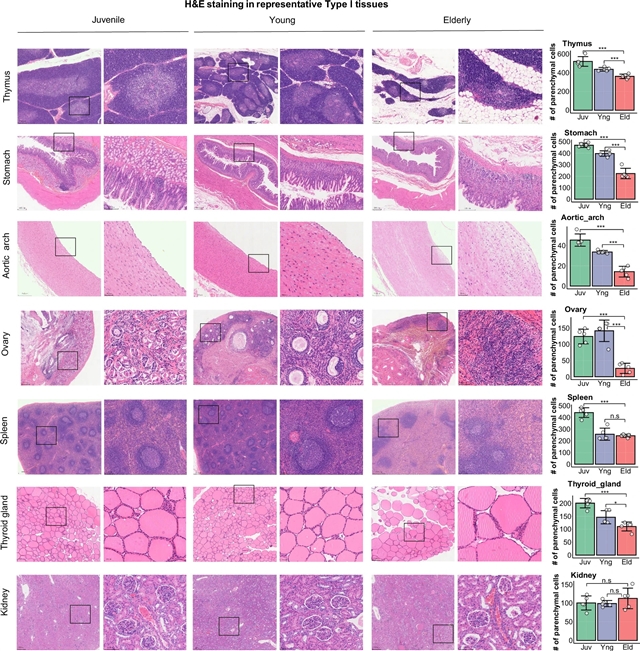
衰老雌性恒河猴30个组织的多组学分子图谱,这一成果由中国科学院昆明动物研究所孔庆鹏小组经过不懈努力而取得。该项研究成果发表在2025年11月17日出版的《自然—方法学》上。
该课题组人员生成并分析了来自17只3-27岁雌性恒河猴(MacacaMulatta)的30个组织的多组学数据,包括转录组、蛋白质组和代谢组。小组发现某些分子特征,如炎症增加,在组织中是一致的,与小鼠和人类的研究结果一致。研究小组进一步发现猕猴的组织衰老是异步的,可以分为两种不同的类型,其中一种类型表现出更明显的衰老程度,可能与mRNA翻译效率降低有关,并主要导致全身衰老。这项工作提供了非人类灵长类组织衰老的全面分子景观,并将翻译效率与组织特异性衰老联系起来。
据了解,对非人灵长类动物(它们在进化上的近亲)几乎所有主要组织的衰老模式进行系统调查,可以为人类组织衰老提供有价值的见解,这在很大程度上是由于采样困难而无法实现的。
附:英文原文
Title: A multi-omics molecular landscape of 30 tissues in aging female rhesus macaques
Author: Li, Gong-Hua, Zhu, Xiang-Qing, Xiao, Fu-Hui, Zhao, Xilong, Lv, Longbao, Yin, Fan-Qian, Chang, Le, Ge, Ming-Xia, Wang, Qiang, Zhao, Jing, Tian, Chuan, Li, Zian, Ruan, Guangping, Pang, Rongqing, Gao, Jing, Ma, Lihua, Pan, Xing-Hua, Kong, Qing-Peng
Issue&Volume: 2025-11-17
Abstract: A systematic investigation of aging patterns across virtually all major tissues in nonhuman primates, our evolutionarily closest relatives, can provide valuable insights into tissue aging in humans, which is still elusive largely due to the difficulty in sampling. Here, we generated and analyzed multi-omics data, including transcriptome, proteome and metabolome, from 30 tissues of 17 female rhesus macaques (Macacamulatta) aged 3–27 years. We found that certain molecular features, such as increased inflammation, are consistent across tissues and align with findings in mice and humans. We further revealed that tissue aging in macaques is asynchronous and can be classified into two distinct types, with one type exhibiting more pronounced aging degree, likely associated with decreased mRNA translation efficiency, and predominantly contributing to whole-body aging. This work provides a comprehensive molecular landscape of aging in nonhuman primate tissues and links translation efficiency to tissue-specific aging.
DOI: 10.1038/s41592-025-02912-y
Source: https://www.nature.com/articles/s41592-025-02912-y
Nature Methods:《自然—方法学》,创刊于2004年。隶属于施普林格·自然出版集团,最新IF:47.99
官方网址:https://www.nature.com/nmeth/
投稿链接:https://mts-nmeth.nature.com/cgi-bin/main.plex
